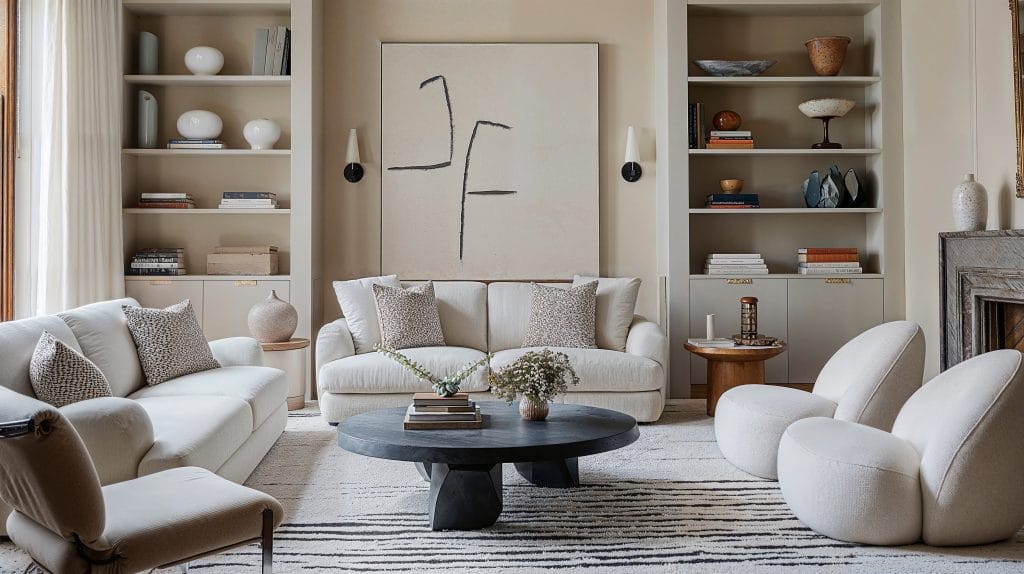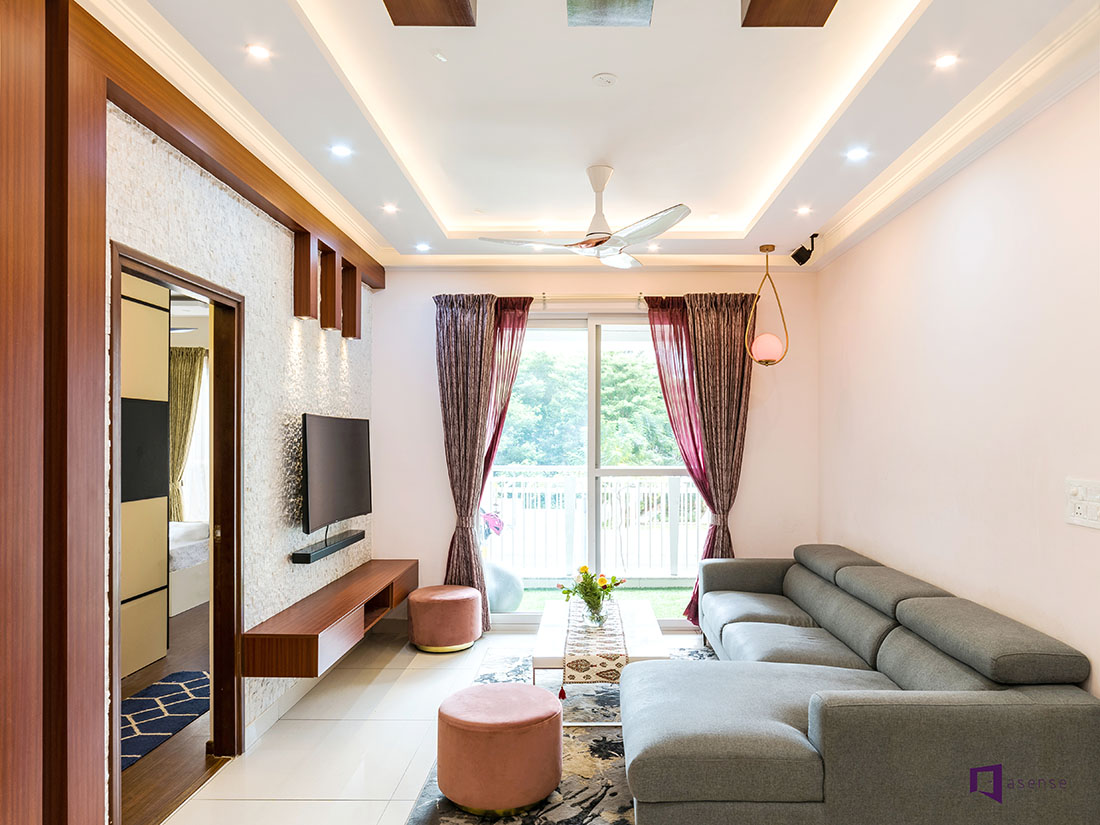Trusted Architecture Firm specializing in modern structures.
Trusted Architecture Firm specializing in modern structures.
Blog Article
Change Your Home With Crucial Concepts of Interior Design and Aesthetics
The art of changing your home with the crucial principles of interior decoration and aesthetic appeal requires a thoughtful method that harmonizes color, equilibrium, and spatial recognition. By recognizing the influence of color concept and the relevance of texture and patterns, one can develop areas that are not just aesthetically appealing yet additionally deeply individual. Achieving this equilibrium involves more than plain decoration; it encompasses a critical plan and an eager understanding of just how each element interacts within an area. As we check out these fundamental ideas, think about just how they could redefine your understanding of home and personal expression.
Comprehending Color Concept
Color concept is an essential aspect of interior decoration that considerably influences state of mind, perception, and general visual. Recognizing the principles of shade concept enables developers to produce areas that resonate psychologically with residents while meeting functional requirements (luxury interior design). Shades can be classified right into three main kinds: primary, secondary, and tertiary. Each category plays a critical function in developing consistency within a room.
The mental impact of shades is extensive; cozy hues such as reds and oranges evoke energy and heat, while amazing tones like blues and eco-friendlies advertise calmness and peace. Moreover, making use of corresponding colors enhances aesthetic rate of interest, producing striking contrasts that can raise a room's allure.
Neutral shades, on the other hand, act as a flexible background, allowing other layout elements to shine. It is important to consider aspects such as lights and the space's objective when choosing a shade combination, as these can modify the understanding of colors throughout the day.
Ultimately, a well-considered color pattern can change an area, promoting a sense of convenience and design that aligns with the citizens' preferences. Mastery of color concept is, therefore, an important skill for any type of interior developer aiming to produce harmonious and welcoming environments.
Accomplishing Balance in Design
How can designers achieve a sense of equilibrium in their rooms? Achieving equilibrium in design is fundamental to creating unified insides.
Unbalanced balance, on the other hand, counts on differing components that still accomplish a natural appearance. This strategy allows for even more dynamic and casual setups, providing rate of interest while maintaining balance. By very carefully picking differing sizes, colors, and appearances, designers can create a visually compelling area that feels balanced yet energetic.
Radial equilibrium emphasizes a main centerpiece with aspects emitting external. This design is typically seen in circular layouts, where furniture and decoration produce a cohesive surround that attracts the eye internal.
Eventually, accomplishing equilibrium requires thoughtful consideration of scale, proportion, and the relationships between components. interior design firms. By skillfully applying these equilibrium concepts, designers can change areas into atmospheres that really feel both visually pleasing and functionally harmonious, improving the total experience for residents
Significance of Spatial Recognition

A keen feeling of spatial understanding allows designers to determine prime focus within a space, assisting the visitor's attention to vital attributes while maintaining a total feeling of unity. It also assists in the calculated positioning of illumination, which can substantially influence the understanding of room and state of mind. Comprehending spatial connections makes it possible for the designer to provide to the details requirements of citizens, making sure that each area offers its designated objective without compromising aesthetic appeals.
Inevitably, spatial understanding is crucial for optimizing the capacity official source of any type of interior area. By very carefully taking into consideration the interplay between measurements, layout, and function, designers can create atmospheres that not just meet practical requirements yet also evoke a sense of comfort and charm, boosting the total living experience.
Integrating Texture and Patterns
Embracing a varied variety of structures and patterns can significantly boost the aesthetic and tactile allure of an indoor area. The calculated usage of numerous materials-- such as wood, steel, textile, and rock-- produces deepness and interest, making a space really feel extra inviting and dynamic. For example, incorporating smooth surface areas with rough textures can develop an equilibrium that draws the eye and engages the detects.
When incorporating patterns, take into consideration both scale and rep. Large patterns can work as focal factors, while smaller, subtle designs can match other aspects without overwhelming the space. Layering patterns, such as pairing floral pillows with candy striped tosses, includes intricacy and a sense of consistency if carried out attentively.
It is likewise crucial to preserve a cohesive shade palette, making sure that structures and patterns work together instead of complete for focus. By selecting a few vital structures and patterns, you can produce an unified aesthetic that mirrors your individual design while improving the overall ambiance of the space. Ultimately, the mindful unification of these components can transform an ordinary room into a sophisticated setting rich with character and heat.
Individualizing Your Area
Developing a room that reflects your individuality is crucial to achieving a really welcoming atmosphere. Customization in interior decoration allows you to infuse your special style and passions into your home, transforming it from a plain sanctuary into a shelter that talks with who you are. Begin by selecting a shade combination that resonates with your emotions-- vibrant colors can energize, while soft tones provide peace.
Include artwork and design that mirror your enthusiasms, whether it be traveling, nature, or abstract principles. Displaying personal collections, such as books, photographs, or souvenirs, can evoke cherished memories and produce prime focus within a space. Additionally, consider tailoring useful pieces, like upholstered furniture, to line up with your visual preferences.

Final Thought
Finally, the transformation of a home through the important concepts of discover here interior style and visual appeal requires a detailed understanding of color concept, balance, spatial recognition, Find Out More structure, and personalization. Each component contributes considerably to producing an unified and useful living atmosphere - Architecture Firm. By thoughtfully incorporating these concepts, people can improve the visual allure and emotional resonance of their rooms, inevitably promoting a home that shows distinct identifications while supplying convenience and practicality
Report this page